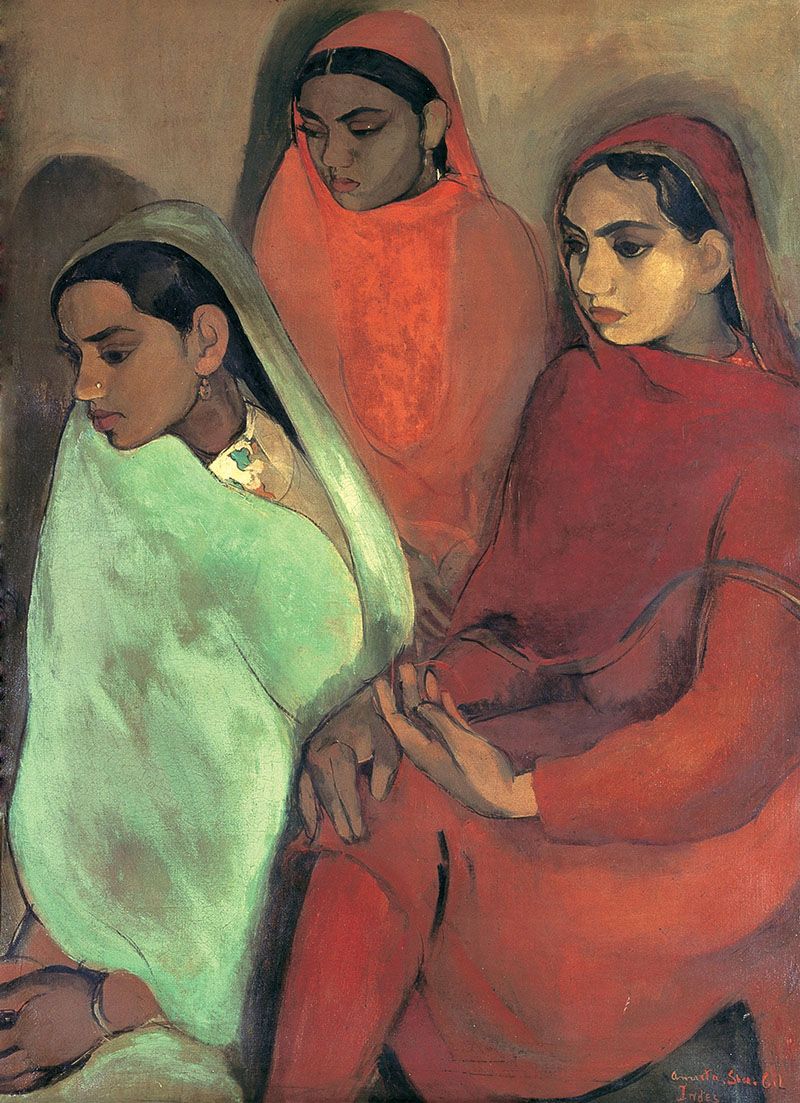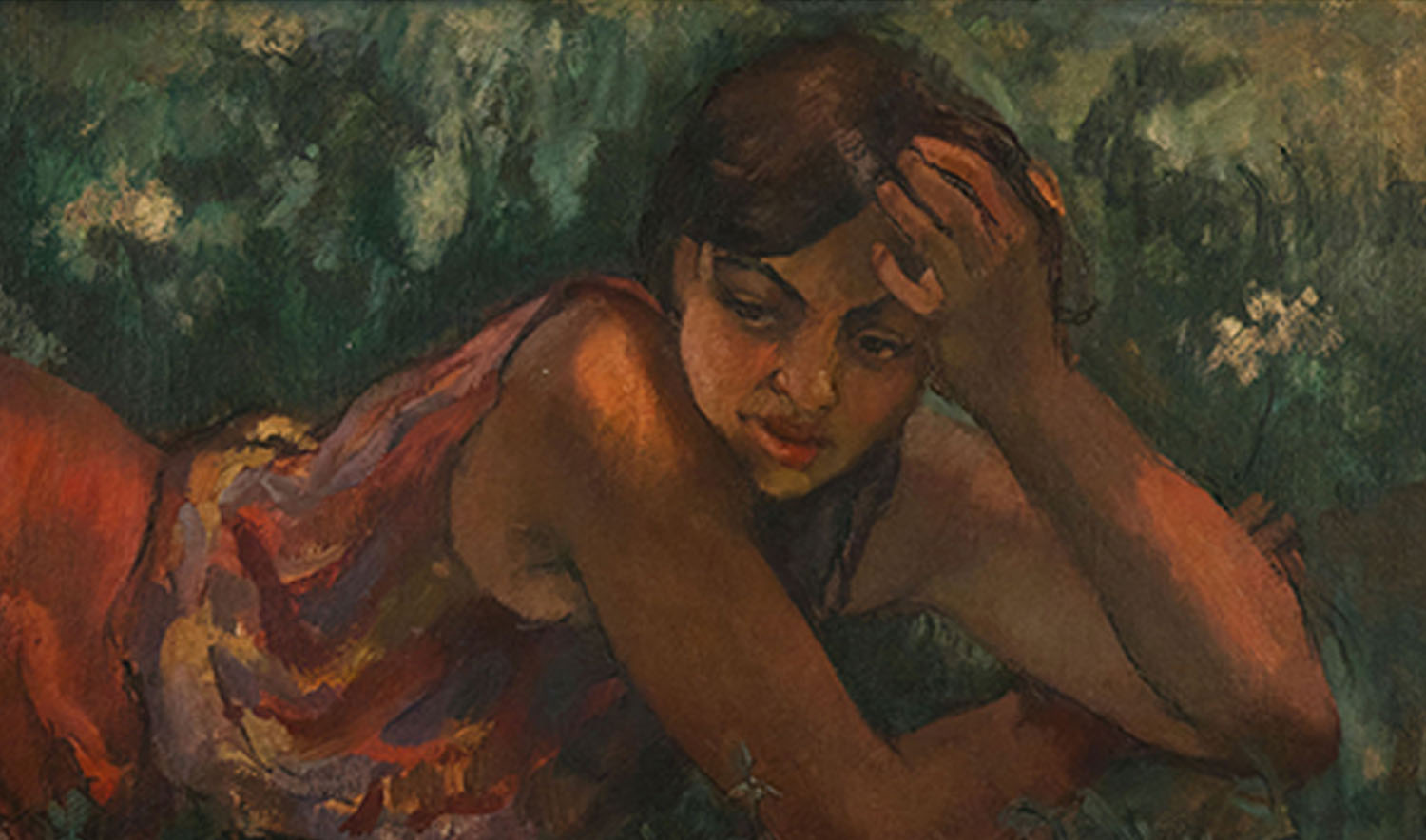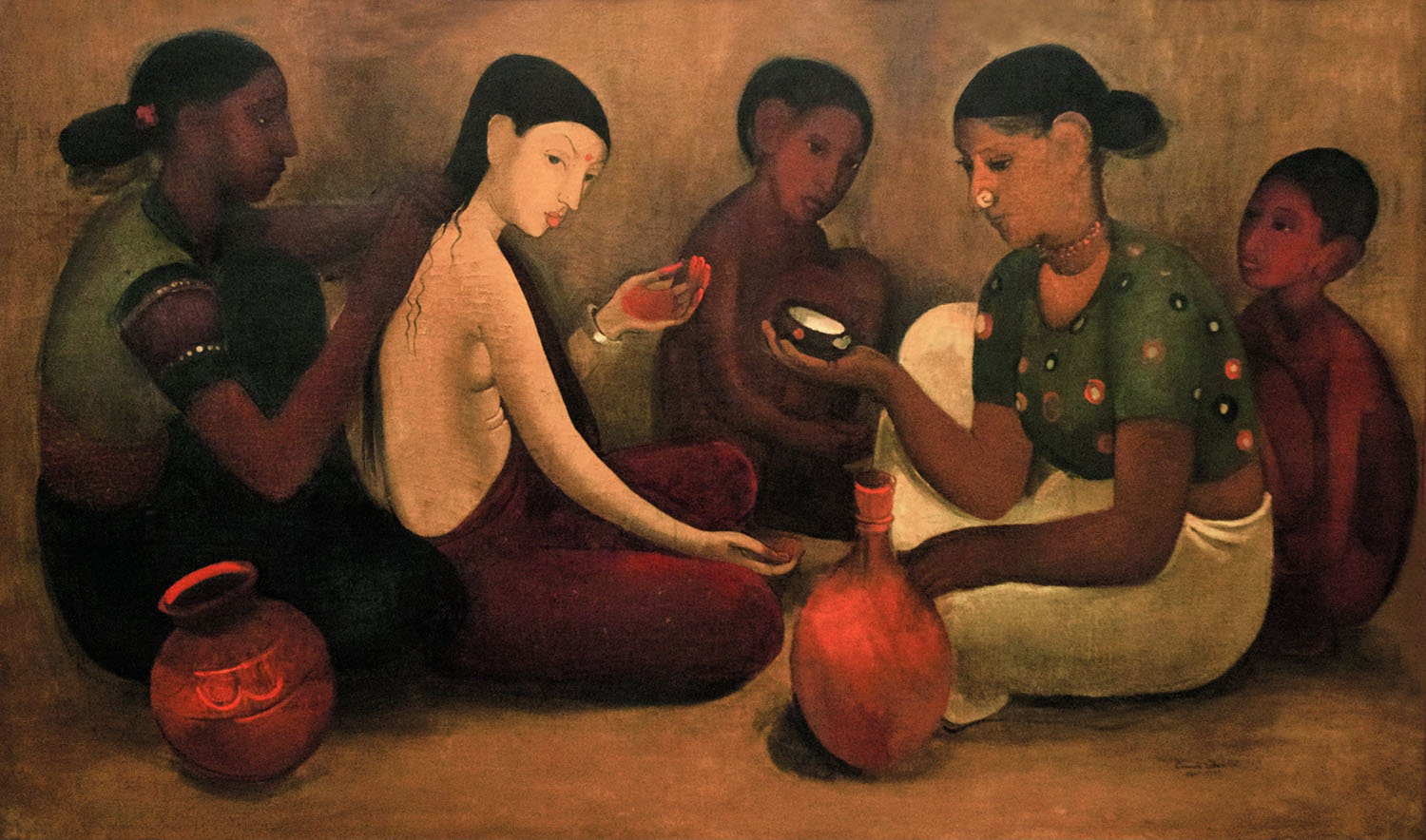ARTICLE
Amrita Sher-Gil
In 1934, she and her family returned to India, where she briefly stayed at her family’s mansion in Amritsar, Punjab, and her uncle’s estate in Saraya before settling down in Shimla. She soon began exhibiting across the country, finding critical acclaim for her work, especially in Bombay. She won two prizes for her self-portraits at the Delhi Fine Arts Exhibition in 1936 and the gold medal for Three Girls (1935) at the annual exhibition of the Bombay Art Society in 1937. Her prominent works during this period, such as Mother India (1935), reflected her preoccupation with poverty and its abjectness. Towards the end of 1935, Sher-Gil painted Hill Women and Hill Men, which are known for their flat planes and deep hues.
In 1936, Sher-Gil became increasingly interested in Indian miniature paintings, which inspired her to use bright and vivid colours in her own work. She also developed an appreciation for other artistic traditions such as the Ajanta murals. Soon after, she travelled to the Ajanta and Ellora caves; Madurai and Cape Comorin (now Kanyakumari), Tamil Nadu; and Cochin (now Kochi), Trivandrum (now Thiruvananthapuram) and Mattancherry, Kerala, and recorded her travels in works such as Fruit Vendors (1936), Bride’s Toilet (1937), Brahmacharis (1937) and South Indian Villagers Going to Market (1937).
Sher-Gil also employed Primitivism in her work, which was balanced by a formalist emphasis in her art, prompted by an introspective approach to her work as well as her disdain for historicism in Indian painting, such as that practised by the Bengal School and which she found shallow and stunted. Consequently, Sher-Gil developed a visual language that combined the bright hues of Rajput and Pahari miniatures — reds, browns and yellows — with the figural monumentality of the Ajanta murals, creating figures that occupied the frame of her canvas. In the following years, Sher-Gil shifted towards smaller figures that were closer in size to those in miniature paintings. She also began depicting natural elements in her work, such as in Elephants Bathing in a Green Pool (1938), Red Clay Elephant (1938) and The Verandah with Red Pillars (1938), introducing the element of decoration in the form of plants and animals.
In 1938, Sher-Gil briefly moved to Hungary, where she married Victor Egan. Subsequently, she returned to India, where she lived at the Saraya estate before moving to Lahore, Pakistan (formerly in British India) in 1941. Some of Sher-Gil’s most famous works were painted during these years in India, such as The Ancient Storyteller (1940), The Bride (1940) and Woman Resting on a Charpoy (1940).
Sher-Gil died in December 1941, a few months after moving to Lahore. Following her death, her family donated several of her paintings to the National Gallery of Modern Art, New Delhi. Her works were declared a National Art Treasure by the government of India in 1976, making it illegal for them to be transported out of the country without official permission. India Post also released a stamp featuring her work Hill Women in 1978.
Bibliography
Our website is currently undergoing maintenance and re-design, due to which we have had to take down some of our bibliographies. While these will be re-published shortly, you can request references for specific articles by writing to hellomapacademy@map-india.org.









